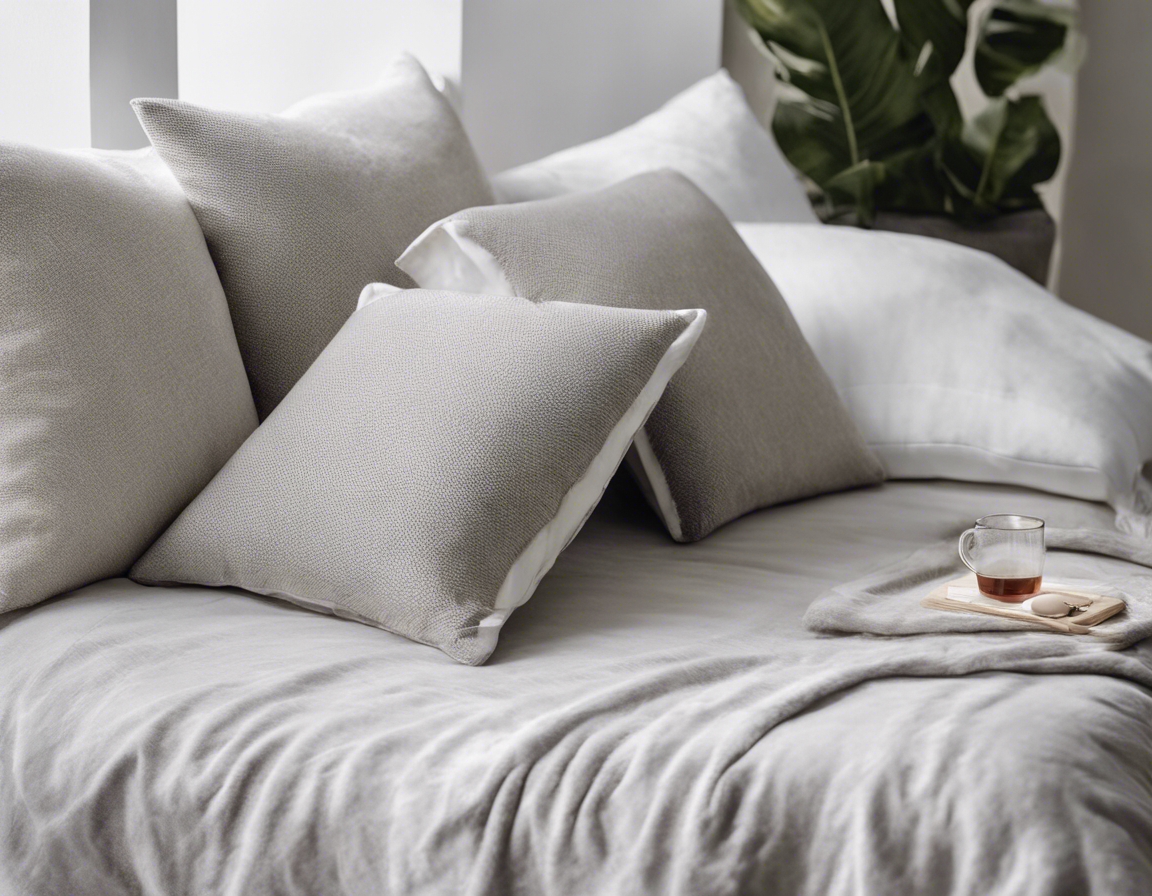Sustainable living with eco-friendly home textiles
Sustainable living is a lifestyle that aims to reduce an individual's or society's use of the Earth's natural resources. It's about making conscious choices that minimize environmental impact and promote a healthier planet for future generations. In the context of home living, this includes everything from energy consumption to the products we choose to furnish and decorate our homes.
Home textiles are an integral part of our daily lives, from the bedding we sleep in to the towels we use and the curtains that adorn our windows. Opting for eco-friendly home textiles is a significant step towards sustainable living. These products are made from natural or recycled materials, involve ethical manufacturing processes, and are often biodegradable or recyclable, reducing their environmental footprint.
The Benefits of Choosing Eco-Friendly Home Textiles
Choosing eco-friendly textiles helps in reducing pollution, conserving water, and minimizing waste. For instance, organic cotton farming uses far less water than conventional cotton and avoids harmful pesticides, protecting ecosystems and biodiversity.
Eco-friendly textiles are often hypoallergenic and free from harmful chemicals, making them safer for your skin and overall health. They also contribute to better indoor air quality by reducing the amount of toxic off-gassing found in synthetic materials.
While eco-friendly textiles might come with a higher upfront cost, their durability and longevity can lead to cost savings over time. Investing in quality, sustainable textiles means fewer replacements and less waste.
There's no need to compromise on style or comfort when choosing sustainable home textiles. Many eco-friendly options are just as soft, comfortable, and beautifully designed as their conventional counterparts.
Types of Eco-Friendly Home Textiles
Organic cotton is grown without the use of toxic pesticides or synthetic fertilizers, making it a healthier choice for the environment and consumers. It's versatile and can be found in everything from bedding to bath towels.
Bamboo textiles are known for their softness and antibacterial properties. Bamboo grows quickly, requires no pesticides, and uses less water than cotton, making it a sustainable choice.
Hemp is a highly durable and renewable resource that can be grown without pesticides. Hemp textiles offer a rustic aesthetic and get softer with each wash.
Textiles made from recycled materials, such as PET plastic bottles, help reduce waste and energy consumption. They can be turned into a variety of products, including rugs and upholstery.
Linen is made from flax plants, which require minimal water and pesticides. Linen textiles are strong, absorbent, and naturally moth-resistant, making them a long-lasting eco-friendly option.
How to Identify Sustainable Home Textiles
Look for certifications like GOTS (Global Organic Textile Standard), OEKO-TEX, and Fair Trade, which ensure textiles meet stringent environmental and social criteria.
Being informed about the materials and processes used in your home textiles can help you make more sustainable choices. Check labels for information on the fiber content and care instructions.
Support brands that are transparent about their supply chain and manufacturing processes. Ethical sourcing ensures that workers are treated fairly and that environmental standards are upheld.
Integrating Eco-Friendly Textiles into Your Home
Begin by replacing everyday essentials with eco-friendly alternatives, such as organic bed sheets or bamboo towels. This gradual approach makes the transition to sustainable living manageable and affordable.
Incorporate eco-friendly textiles into your home decor with items like throw pillows, curtains, and table linens made from sustainable materials. These small changes can make a big impact on the overall aesthetic and environmental footprint of your home.
Proper care of your eco-friendly textiles can extend their life and reduce the need for frequent replacements. Follow care labels, use eco-friendly detergents, and consider line drying to preserve the quality and integrity of your textiles.
Future Trends in Sustainable Home Textiles
Research and development in sustainable materials continue to advance, offering new and improved options for eco-friendly home textiles. From algae-based fabrics to new recycling technologies, the future looks bright for sustainable living.
Technological advancements in textile production are reducing water and energy usage, minimizing waste, and improving the overall sustainability of home textiles. Digital printing, for example, has revolutionized fabric design with its precision and efficiency.
As consumers become more aware of the environmental impact of their purchases, demand for sustainable home textiles is growing. This shift is encouraging manufacturers to prioritize eco-friendly practices and products.





Comments (0)